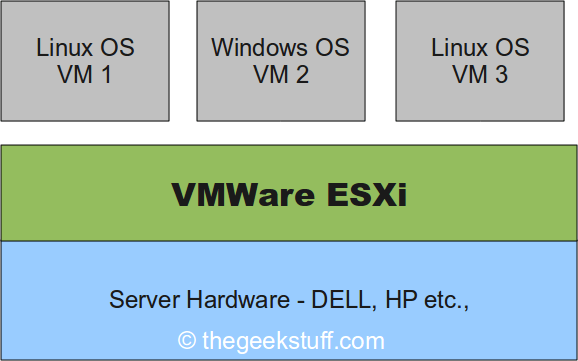VMware ESXi 4.1.0: Modules, bootOption, SSH, NTPD, NFSD
- Moduli caricati in ESXi
Sarebbe utile in fase di debbugging su un malfunzionamento del nostro server di virtualizzazione andare a controllare quali moduli siano stati caricati e nel caso ci servisse reperire informazioni, effetuare il load / unload enable/disable
Prima cosa possiamo ottenere la lista dei moduli caricati con il comando:
esxcfg-module -l
ricevendo in output una risulatato simile:
vmkernel 53 10995 procfs 2 16 vmkapiv1_0_0_0_vmkernel_shim0 32 vmklinux 14 644 tpm_tis 1 12 random 1 32 usb 4 112 ehci-hcd 0 36 usb-uhci 0 24 hid 0 24 dm 2 12 nmp 25 120 vmw_satp_local 7 8 vmw_satp_default_aa 0 8 vmw_psp_lib 8 12 vmw_psp_fixed 7 12 vmw_psp_rr 0 16 vmw_psp_mru 0 12 vmw_psp_fixed_ap 0 12 vmw_satp_alua 0 20 vmw_satp_cx 0 28 libata 1 92 usb-storage 0 60 vfat 1 36 mask_path_plugin 0 8 vaai_filter 0 16 vmw_vaaip_emc 0 8 vmkapiv1_0_0_0_nmp_shim 0 8 vtddmar 0 8 vmci 4 112 iscsi_trans 3 52 hub 1 8 netsched 1 16 e1000e 0 116 iscsi_linux 0 16 . .......
ma sarebbe interessante avere qualche informazioni in più riguardo un determinato modulo,
detto fatto…
Poniamo il caso che il modulo da noi interessato sia quello relativo a na delle nostre
interfacce di rete (componenti fondamentali), quindi:
esxcfg-module -l | grep 1000
Name Used Size (kb) e1000e 0 116
recuperiamo le informazioni sull’abilitazione del modulo e opzioni varie (se presenti):
esxcfg-module -g e1000e e1000e enabled = 1 options = ' '
inoltre possiamo recuperare anche un altra topologia di informazioni come il path fisico di dove si trova
il modulo, Parameters ( che contiene na bella lista di info tecniche):
esxcfg-module -i e1000e
esxcfg-module module information input file: /usr/lib/vmware/vmkmod/e1000e.o License: GPL Version: Name-space: Required name-spaces: com.vmware.vmkapi@v1_1_0_0 Parameters: IntMode: array of int Interrupt Mode InterruptThrottleRate: array of int Interrupt Throttling Rate KumeranLockLoss: array of int Enable Kumeran lock loss workaround RxAbsIntDelay: array of int Receive Absolute Interrupt Delay RxIntDelay: array of int Receive Interrupt Delay SmartPowerDownEnable: array of int Enable PHY smart power down TxAbsIntDelay: array of int Transmit Absolute Interrupt Delay TxIntDelay: array of int Transmit Interrupt Delay WriteProtectNVM: array of int Write-protect NVM [WARNING: disabling this can lead to corrupted NVM] copybreak: uint Maximum size of packet that is copied to a new buffer on receive heap_initial: int Initial heap size allocated for the driver. heap_max: int Maximum attainable heap size for the driver. skb_heap_initial: int Initial private socket buffer heap size allocated for the driver. skb_heap_max: int Maximum attainable private socket buffer heap size for the driver.
In caso vogliate abilitare il suddetto modulo al boot basta:
esxcfg-module -e e1000e
per farne un unload:
esxcfg-module -u e1000e
Una cosa interessante forse comoda quando si gestiscono tanti server vrituali con HW differente e le
problematiche sono molteplici è creare un alias per un determinato modulo, ovvero come detto prima
il modulo e1000e è il modulo della scheda master del server ESXi, potrei volere avere un nome più facile
da ricordare e da ricercare del tipo scheda_rete_master o master_nic, lo si fa così:
esxcfg-module -m master_nic e1000e
ricerchiamola
esxcfg-module -l | grep nic master_nic 0 116 esxcfg-module -l | grep 1000 e1000e 0 116
con ciò finisce questa parte.
- BootOption
ci permette di reperire alcune opzioni di boot:
bootOption -a
FS Check : 0 Audit Mode : 0 USB Boot : 1 Userworld Swap : 0 Booted after rollback : 0
e logicamente di poterle anche definire:
bootOption -a --all mostra a video tutte le opzioni di boot -f --fsck modaliyà per il check del filesysten -i --audit modalità audit -r --raw Print w/o annotation -u --usbBoot boot da device USB -w --uwSwap Userworld Swap -R --rollback Boot dopo un azone di rollback
- NTP
vi /etc/ntp.conf
restrict default kod nomodify notrap nopeer restrict 127.0.0.1 server ntp1.inrim.it server ntp2.inrim.it driftfile /etc/ntp.drift
aggiungere le righe dei due server nella forma:
server ntp1.server.it server ntp2.example.it
per rendere effettive le modifiche non basta eseguire un semplice /etc/init.d/ntpd restart
ma bisogna riavviare tutti i servizi tramite /sbin/services.sh restart
- SSH
controllare che nel file /etc/services ci siano le seguanti righe
ssh 22/tcp # SSH Remote Login Protocol ssh 22/udp # SSH Remote Login Protocol x11-ssh-offset 6010/tcp # SSH X11 forwarding offset
in caso negativo inserirle e riavviare i servizi
- NFSD
controllare che nel file /etc/services ci siano le seguenti righe
nfs 2049/tcp nfsd nfs 2049/udp nfsd
in caso negativo inserirle e riavviare i servizi
un saluto,
Giovanni Uccio





